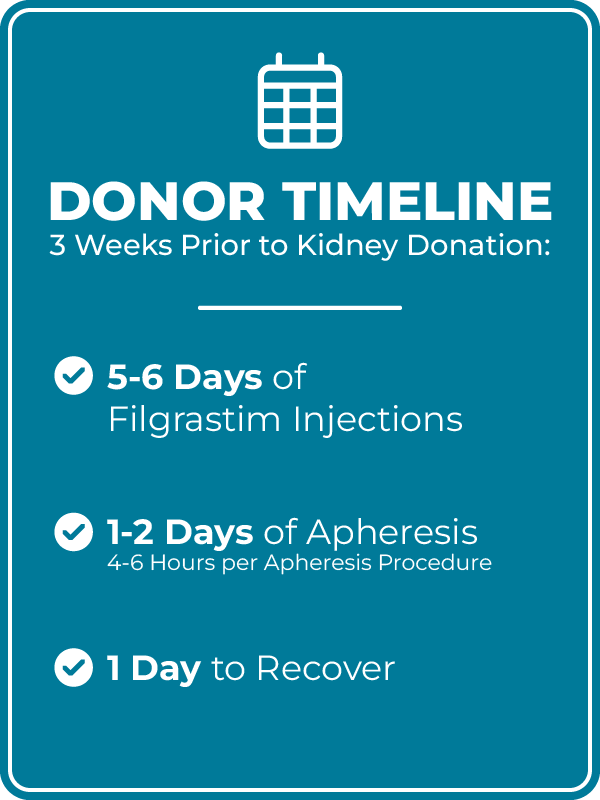The Stem Cell Donation Process for Kidney Donors

Donating peripheral blood stem cells (PBSC) involves two steps: receiving injections of filgrastim and making the donation.
Receiving filgrastim injections
- To move more blood-forming cells from your bone marrow to your bloodstream, you will receive filgrastim, a drug given by injection each day for five days before the PBSC donation. In rare instances, a sixth day of filgrastim will be needed.
- The first injection will be given at a donation center. You may receive injections on days two, three and four at your place of work, your home, or at a donation center.
- On the fifth day, you will receive your final dose of filgrastim, and then donate your blood cells at a donation center.
Donating the cells
- PBSC donation is done through a process called apheresis, which is similar to donating plasma.
- During apheresis, a needle will be placed into each of your arms. Blood will be removed from a vein in one arm and passed through tubing into a blood cell separator machine.
- The machine collects blood-forming cells, platelets and some white blood cells. Plasma and red blood cells are returned to your body through the other arm.
- All the tubing used in the machine is sterile and is used only once for your donation.
- If only one donation is done, it may take up to eight hours. In the rare instance where two donations are necessary. They will be done on separate days, and each collection will take four to six hours.
